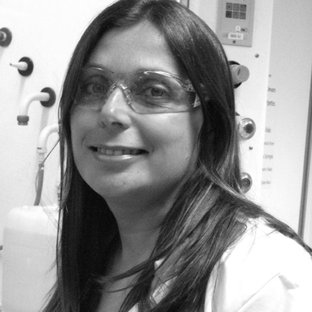
Professor Angela Russell
Biography
I tutor Organic Chemistry at St John’s College. In the Chemistry Department I lecture on Heterocyclic, Aromatic and Pharmaceutical Chemistry and Natural Products Chemistry. I also lecture and teach practical classes in Biomedical Sciences, Medicine and the taught MSc course in Pharmacology. Links to lecture support material and problem sets can be found here.
I gained my MChem degree from the University of Oxford in 2000 and my DPhil in Organic Chemistry in 2004 under the joint supervision of Professor Steve Davies and Dr Tim Perera from Yamanouchi plc (now Astellas Pharma Inc.). The main focus of my work was using a pharmacophore modelling approach for the development of novel phosphatase inhibitors but also encompassed the development of novel asymmetric synthesis methodologies and the synthesis of molecules of biological importance. In July 2007 I was awarded a prestigious Research Councils’ UK Fellowship in Medicinal Chemistry jointly between the Departments of Chemistry and Pharmacology in Oxford. In 2012 I was appointed as University Lecturer, and in 2014 an Associate Professor in Medicinal Chemistry.
My work has resulted in over 75 publications and patent filings to date. I've founded two companies, MuOx Ltd (acquired by Summit plc in November 2013) and OxStem Ltd.
Research Interests
My research interests are in the field of medicinal chemistry and broadly encompass the development of small molecules to control signalling processes. I've realised several successful multidisciplinary research collaborations, including identifying small molecules to upregulate utrophin for the treatment of Duchenne Muscular Dystrophy, developing novel inhibitors and activators of developmental signalling pathways and new anti-cancer agents and cancer biomarker detection methods. Since 2005 I've also initiated a number of collaborative programmes involving the discovery and development of small molecules to manipulate stem cell fate.
For more information and publications see the AJR group’s webpages.